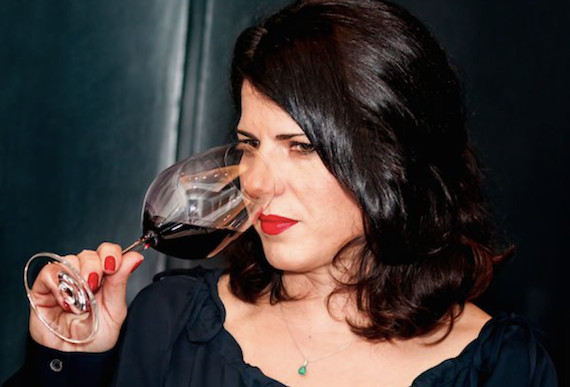Le Naour took over the role from Thierry Budin in the summer of 2019. She was previously technical director at CA Grands Crus, and she still runs the technical side of the business, while also overseeing all operations.
CA Grands Crus is owned by Credit Agricole, and its current portfolio includes Chateaux Meyney, Grand Puy Ducasse, Clos Saint-Vincent and Blaignan in Bordeaux, along with Santenay in Burgundy.
It recently sold Château La Tour de Mons in Margaux to the Perrodo family, and Château Blaignan in Médoc was also put up for sale in order to streamline the portfolio and invest heavily in renovating Grand Puy Ducasse.
Le Naour is a Parisian, whose parents were both in the catering business. She trained as an agronomic engineer and oenologist. She is an expert on both the Left Bank and the Right Bank, and one of the world’s most respected wine professionals.
How has CA Grands Cru developed over the past 18 months since you took over as director? What challenges have you faced and how have you responded?
The first challenge was to find the good balance between managing as the new executive director, but also keeping my technical cap.
The luck I have is that I has worked with my team for 10 years – Benjamin Cassoulet in Grand-Puy Ducasse and Fabien [Faget] first in Blaignan and now in Meyney – and they have grown up with me.
The second was to face the Covid crisis after one year managing the company! A huge and difficult challenge.
How have you adapted to the challenging trading conditions this year? Have you ramped up off-trade and ecommerce sales? Do you think increased home consumption will remain a trend in future?
I was impressed by the adaptability of the teams and the speed with which it took place. Moreover, the second wave of lockdown in France did not mark any break in our ways of working.
Indeed, we are developing an e-shop site project – I’ll tell you more about it in future – but the world is changing, it is changing quickly and you have to change with it.
I think, on the other hand, that home and restaurant consumption patterns are not going to revolutionize that much.
Human beings like to go out, and everyone misses dinner in a restaurant with friends. On the other hand, developing new ways to taste or visit a property from home, partially perhaps, are things to consider. But nothing replaces human contact and exchanges, and especially in our professions.
Do you anticipate strong demand for high-quality Bordeaux wines over the next couple of years, despite challenging global economic conditions? What is your message to international drinks buyers about why they should stock the wines of Chateau Meyney and the other chateaux in the CA Grand Crus portfolio?
I hope so! It's complicated to answer this question, but in fact, despite the Brexit, despite the health crisis, despite the Trump tax on French wines, the year 2020 is not so bad for Châteaux Meyney and Grand-Puy Ducasse. Our consumers are loyal and their confidence in the quality of our wines has not changed.
Why buy our wines? Because it will be emotion, sharing and guaranteed pleasure when they open the bottle. Beyond the great professionalism of the technical teams, the exceptional Meyney terroir and the attention paid to each stage of the work at Château Grand-Puy Ducasse; I hope that the pleasure we take in making this wine is also felt in the bottle.
What can the French wine industry do to secure its future health, from a commercial perspective and a sustainability perspective? Does the current situation provide an opportunity for reinvention?
First of all, be united! France has the great strength to have History, Territories and Terroirs recognized by all and very complementary.
We must stop thinking individually but be united in the face of the challenges that await us. Regarding our properties, we did not wait for crises to commit to a strong environmental approach but also a strong CSR approach. And integrating these issues – Human Beings, Environment and Society – will be the key to moving forward.
How is the 2020 vintage looking?
Merlot are incredible – full-bodied, powerful, fresh, concentrated, not that high in alcohol, everything we could dream of. Petit Verdot are great. Cabernet Sauvignon are more classical. It’s a bit too early to tell [on the Cabernet]. By December or January we will have a better idea.
What steps have you taken to mitigate the impacts of climate change on the region?
Every year we make different analyses of soils in order to be able to adapt the fertilisation of the vineyard to the needs of each vine. We now have measures going back 30 years, showing that hydric stress is more frequent.
When we pick grapes, we have higher alcohol and also higher malic acid than we had before. It can be quite high, especially in Petit Verdot. It means you can have a feeling of acidity when you pick the grapes, and the acidity decreases during malolactic fermentation and becomes fresh. Cabernet Sauvignon and Petit Verdot allows us to have the right balance, despite the fact that we have a higher percentage of alcohol.
The average alcohol of Merlot increased last year by 1%, the average of Cabernet Sauvignon only increased 0.2%. The increase of alcohol is mostly due to the Merlot.
2020 was my 11th vintage at Chateau Meyney, and I can tell you that the vineyard shows more and more episodes of hydric stress.
Because we have this great chance to be so close to the river, we are not one of the properties that suffers the most right now from global warming, but of course it’s a preoccupation. We have to think of it, not necessarily by changing the grape varieties that are planted in the vineyard.
For the next 20 years, reinventing the place of Petit Verdot and Cabernet Sauvignon in the vineyard, because they help us to keep freshness, to contain the increase of the alcohol content in our wines.
Also to think choose rootstocks, because rootstocks are definitely a kind of filter between the soil and the vine, and those last 20 years we tended to select rootstocks that were very low in vigour.
We need to select rootstocks that were planted in the 1980s and 1990s, that are now not considered to be high-quality rootstocks – I think some of them will come back in the vineyard. They make very good wines and they are not as sensitive to global warming. We have several points on which we can play in order to decrease the impact of global warming.
The wines that were made in the 1960s at Chateau Meyney don’t look like the ones in the 1970s and 1980s. In the 1960s it was very difficult to get ripe Cabernet Sauvignon. It’s much easier now. It’s part of Bordeaux.
We have to search for new blends regarding the cepage and the rootstocks, in order to have a better adaptation. We can also think about moving the grow orientation, stopping de-leafing, there are plenty of things we are moving in order to adapt our vineyards to climate change.




